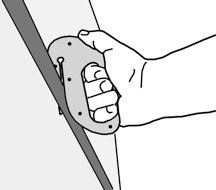At the Transporting Students with Disabilities and Preschoolers (TSD) Conference in March, Charley Kennington, of Innovative Transportation Solutions, and Kathy Furneaux, of the Pupil Transportation Safety Institute, discussed an important aspect of transporting groups of children: having a plan for how to get all students off the vehicle quickly in an emergency. When a school bus carries children who ride restrained in five-point harnesses, you can readily see how important it is to practice and prepare for emergency evacuation. In fact, knowing how a child would be evacuated in an emergency should be considered as important as learning how the CSRS is installed.
Being ready to quickly remove a child from a CSRS on the bus is just one of a wide array of evacuation considerations, but an important one. For a child with special needs, appropriate procedures should be considered during meetings of the child’s Individualized Education Program (IEP) group and written in the IEP documentation. Whereas in a family vehicle, a reasonable plan might be to release the installation belt and the child in his CR, this approach is usually not practical on a bus. Complicating factors on a school bus include the number of children on board, the fact that CSRS are often installed using a cam wrap (a strap around the bus seatback), and the confinement of narrow row spacing and aisles. Therefore, evacuation procedures often involve use of belt cutters, specifically as described in the box on the next page.
Some children ride to school while seated in a wheelchair rather than a CSRS. Sue Shutrump, OT/PT director for Trumbull County Educational Service Center in Ohio and an expert in transportation of children with special needs, says that it is entirely impractical for an evacuation plan to include use of the bus’s power lift for removing children while in their wheelchairs. In a true emergency, the limited time and resources available would instead require one or two people lifting or dragging the occupant, leaving the wheelchair behind. A belt cutter would again be needed to cut both the occupant restraint (lap-shoulder belt) and positional harness (a procedure that would depend upon the particular wheelchair and restraint system).
An even better situation for children who use a wheelchair is to transfer them to appropriate seating on the bus while being transported, whenever possible. According to AAP policy guidelines, this is best practice for crash safety. An additional consideration is that it is also easier to evacuate a child who is seated in a bus seat (whether in a CSRS or not) in the event of an emergency, since there are fewer belts to cut to release the child than when seated in a wheelchair.
Those who work in the school bus industry know that this article merely scratches the surface of the overall effort required to develop an evacuation plan. More information can be found through the resources listed below. An idea for CPSTs who do not work with buses but who would like to help is to offer school districts old/expired CSRS for use in training (clearly marked “DO NOT USE,” of course), as drivers and aides can use them to practice cutting webbing. This is a good way to repurpose unwanted equipment and could also be a nice way to introduce yourself in order to start a positive relationship with your local district.
Cutting CSRS Straps for Bus Evacuation

Convertible, Combination, and Integrated CSRS: Cut each of the two shoulder straps right below the harness retainer clip (HRC). Once these are cut, pull down on the HRC to slide it off of the cut ends of the straps. The straps below the cut will slide easily through the harness’ latchplates (still buckled) as the child is pulled up and out of the CSRS.
Safety vest: These are installed using a cam wrap that runs vertically around the seatback. Cut the cam-wrap strap just below the attachment hook that secures it at the back of the seatback. The straps will then pull free of the seatback as the child leaves the bus (still wearing the vest). The cut cam wrap strap that’s still attached to the shoulders of the vest can be held by an adult to move or guide the child, if needed.
School-bus only CSRS: Although these install with a cam wrap, cutting for evacuation is the same process as for a conventional forward-facing CR. Cut the two shoulder straps below the harness retainer clip, and then pull down on the clip to remove it.
Conventional RF-only CR: Remove the carrier (from the base, if used) and evacuate the child while harnessed in the carrier.
Resources:
A 10-minute training video on school bus evacuation is now available: “School Bus Evacuated—Breaking News!” Go to www.ptsi.org (Update, July 2018: This video is no longer available).
SRN’s The School Bus Safety Handbook, available on this website.

